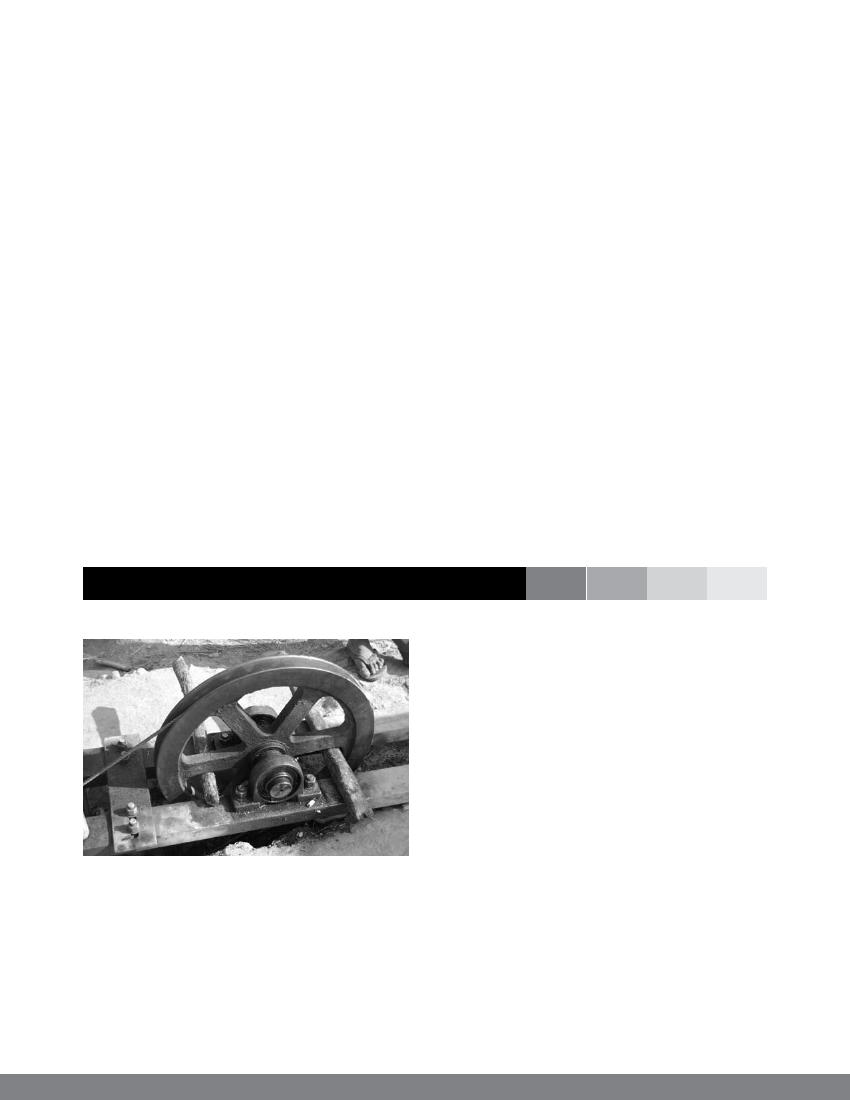
design
diameters. Before cutting off the sample rope,
the test sample should be securely seized with
wire of 5 rope diameters in length to prevent the
slackening of the test length.
Both end of the sample should be capped with
white metal cap (zinc caps) and the sample be
tested on a suitable tensile test machine until
the breakage is obtained. The testing procedures
should comply with relevant Indian code.
3.1.10 Ordering wire ropes
Wide ranges of ropes are manufactured for various
purposes or applications. The details of wire ropes
and their application requirements should be
clearly mentioned while placing the procurement
order for the rope. The order should contain the
following information:
The length of the rope
The rope construction (type of lay, method of
stranding, type of core)
The rope type (seale, warrington)
The rope diameter
The size of the wire (diameter, metallic area
and other dimensions)
The tensile strength of wire
The rope weight per metre
The grade of the galvanisation
Lubrication
Preforming/non preforming
Elongation (pre stretched/non pre stretched )
Rope/wire tests and certification
Working condition
While placing an order for a rope, an extra
allowance of length should be considered
for anchoring and laying, and transporting or
transferring. Manufacturer’s test certificate
should be obtained from the manufacturer at the
time of rope delivery.
3.2 Mechanical Components
Photo 2: Sheavecast Iron
3.2.1 Sheave
Diameter of driving sheave: The diameter should
not be less than 80 times that of the size of wire
rope and 800 times that of the outer wire of the
wire rope to prevent the sharp bending of the wire
rope at the sheaves. For example, if the hauling
rope diameter is 9 mm, the diameter of the sheave
should not be less than 720 mm (0.72 m). This
is detrimental to the life of the hauling wire rope.
The radius of the sheave groove rg=0.53 d
A larger groove diameter leads to flattening of the
rope while a small groove diameter causes it to
be pinched. The sides of the groove should be
sloped at an inclusive angle of 60 degrees so
that the ropes rest on the groove by one third
of its circumference without touching its sides.
Other requirements:
Steel shafts with keys for mounting grooved
pulley of required diameter
Self aligning deep groove ball bearings for
the shafts
23